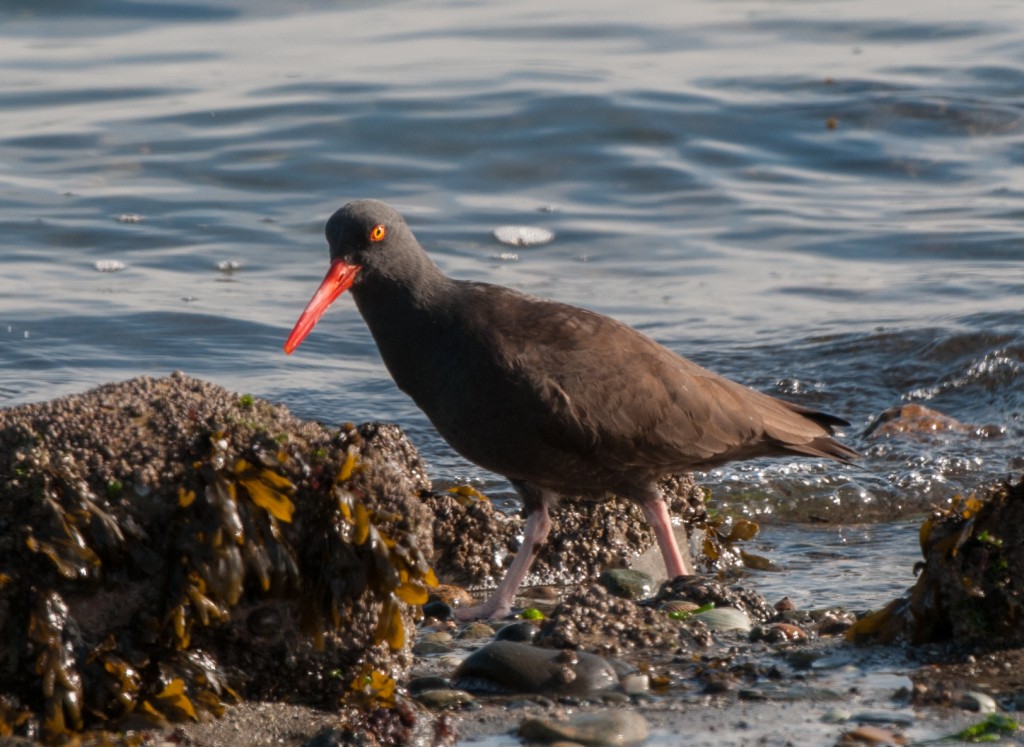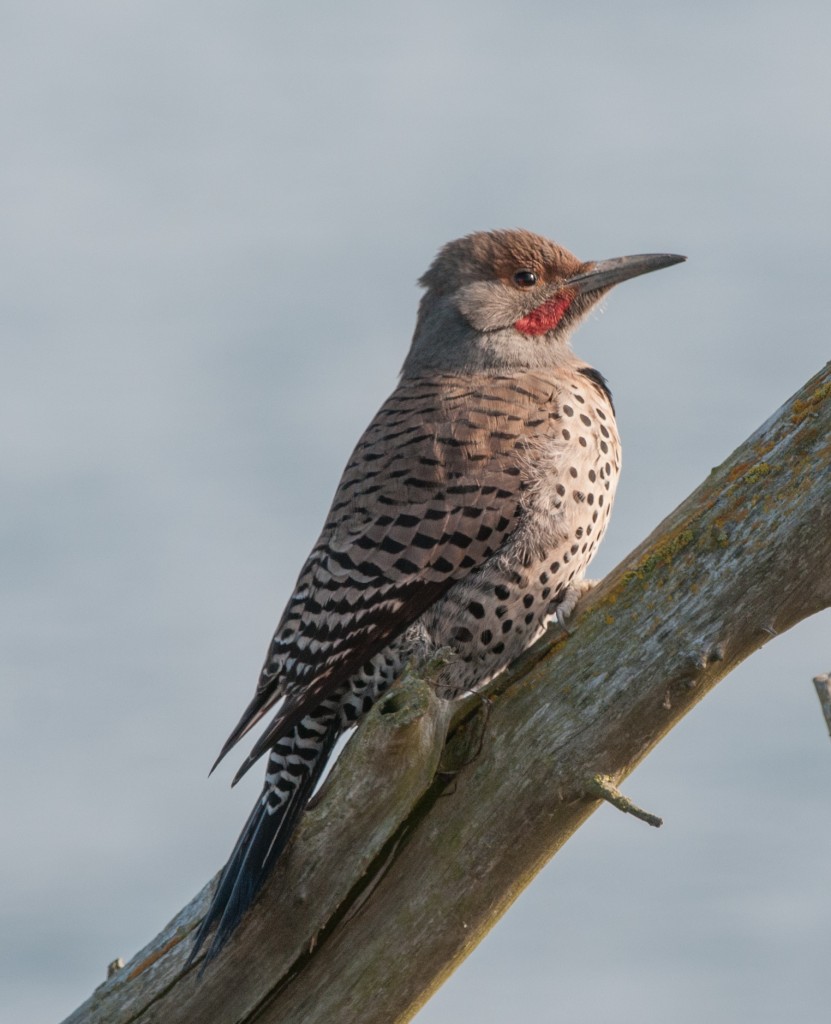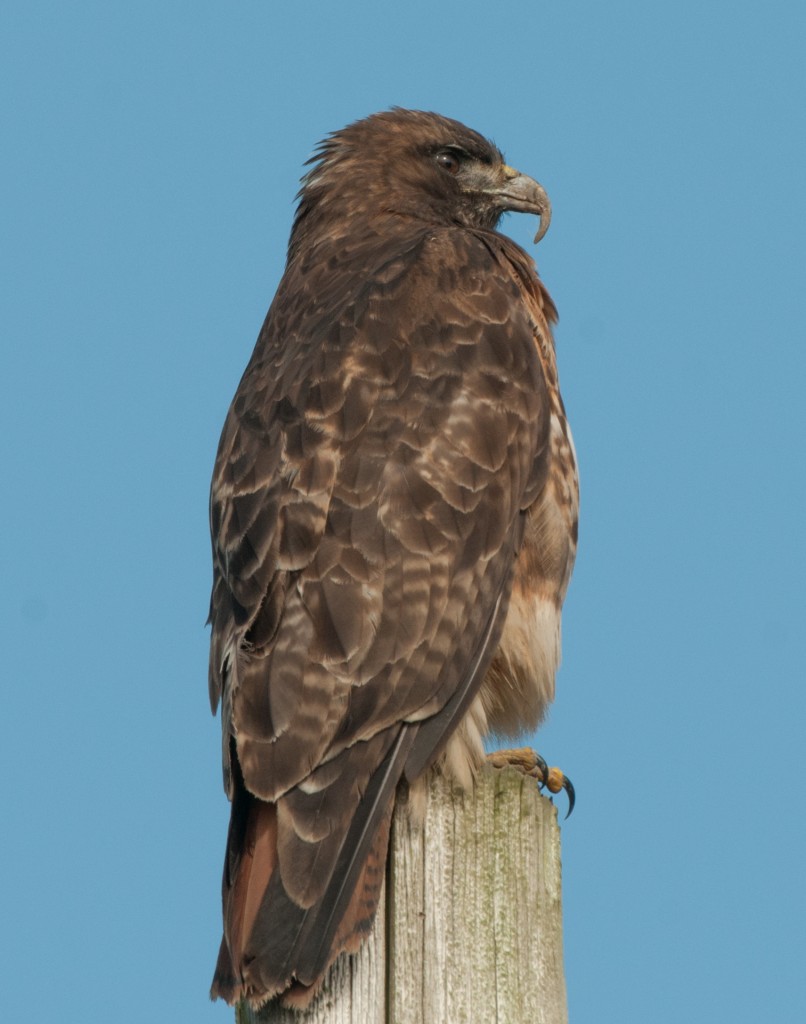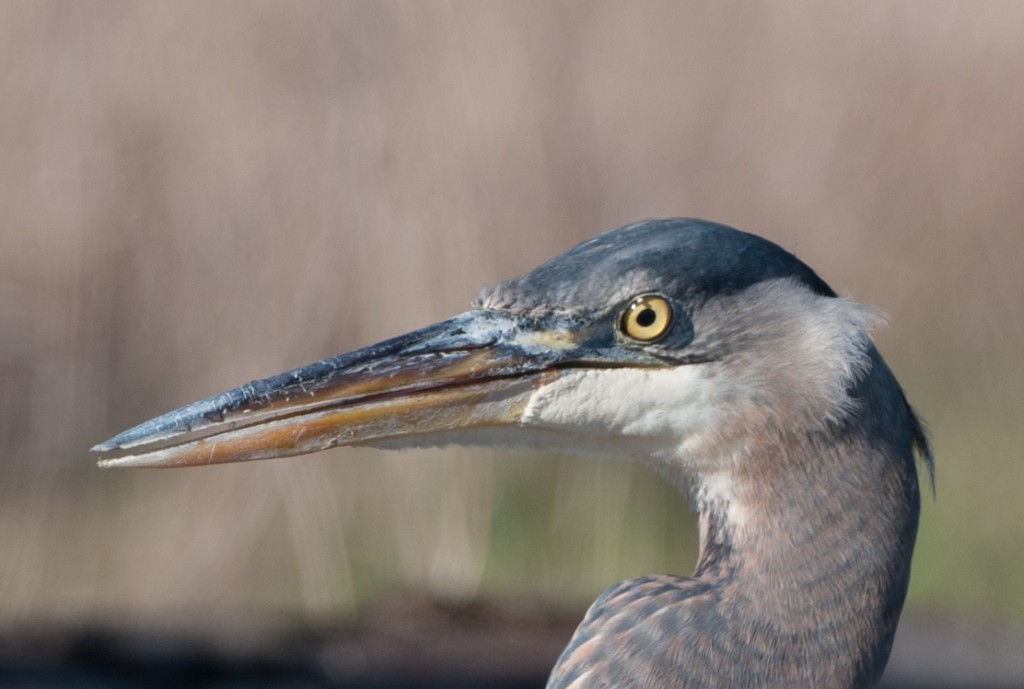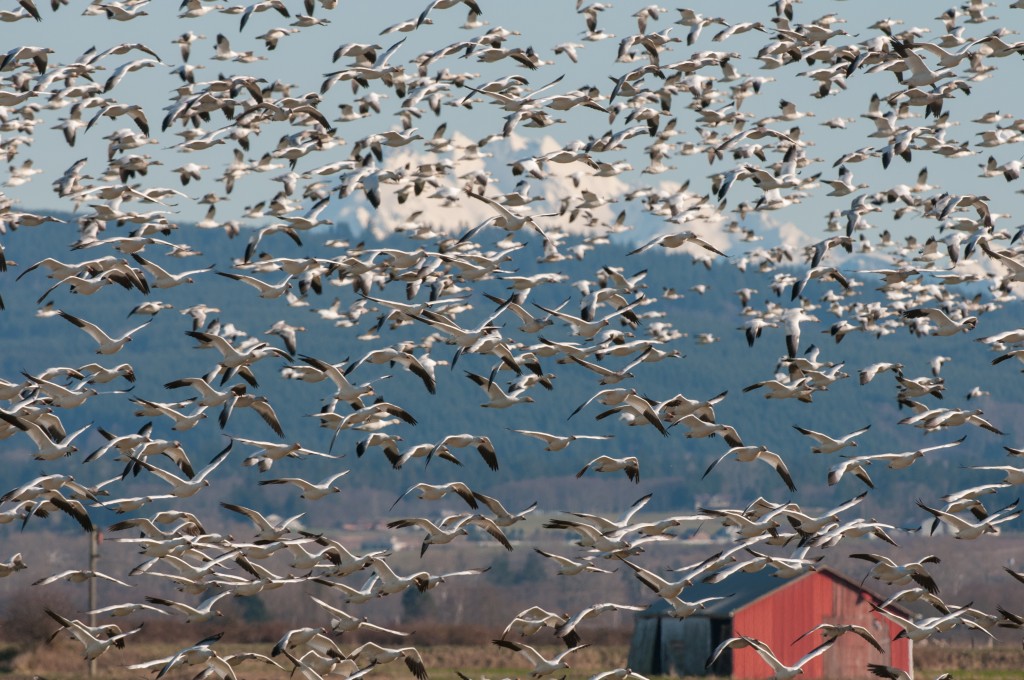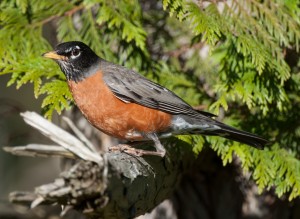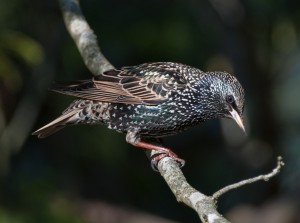On Friday, February 15 I made a birding excursion to Fir Island to take advantage of beautiful, sunny weather. Sun can often be a friend to a photographer, but depending on each individual shot, it can also be an enemy.
I first toured March Point hoping for some waterfowl. I was disappointed in that regard but there was a reward. For the first time ever, in many, many trips around March Point, I found a single Black oystercatcher along the rocky shoreline on the south side of the refinery. I was a little too far away and the sun wasn’t my friend for photos of the bird, but I felt I had to record it for its perceived rarity at that location. I’m much more accustomed to seeing these birds in Washington Park on my early morning walks.
Just slightly further along I found a Northern flicker on the side of some driftwood. It wasn’t a place that I would have expected to find a flicker but they are in the area on the inside of the loop road.
In driving Channel Drive along the Swinomish Channel I encountered a Red-tailed hawk with an elongated beak. This is apparently a problem in the Red-tailed hawk population. The elongated beak makes it difficult for the birds to eat the food they catch and they can eventually die of starvation. (I’m getting a little beyond my knowledge base here!) I sent photos to the area’s raptor expert… I think he occasionally traps these birds and shaves the beak down to a size where it is again useful.
Next up was the wildlife access at the end of Rawlins Road. I’ve noticed that the Great Blue heron that frequents that area is getting a lot more used to people. A few short months ago it would fly with the slightest human provocation, but it seems willing to continue to gather food while being watched from not very far away.
Moving on down the road, I found the main crowd of geese along with a very substantial crowd of onlookers. (In photographing the geese, the sun is usually your friend!) These eruptions are usually caused by a Bald eagle flying in the vicinity.
So now for the most interesting puzzle of the day’s outing! What do the following birds have in common?
(As they are fond of saying in films, “actual birds filmed on location”).
In birding the Dodge Valley area, after retreating from Fir Island, I encountered a substantial number of birds flying to and from the ditch beside the road. They were quite some distance from me and I assumed that they were sparrows (I must start wearing glasses!) but found as I crept closer in the car that they were actually robins. And while a few were going down to the ditch (where I presumed there was water) many of them were frequenting an area back from the road where there was a short but thick patch of salal and grass growing. There seemed to be no depression, no water and no other attractant to the birds. Yet the robins seemed desperate to congregate in an area about eighteen inches in diameter! There was some preening taking place but I could see no behavior that would lead me to believe that they were accessing water or eating.
Soon after I arrived the robins were displaced by a large flock of starlings which had the same goal in mind… to congregate in that same small area. I took several photos of as many as 7-8 birds in that small area at one time and the activity was very vigorous. I considered getting out of the car and investigating, but that would have disturbed the birds and I didn’t want to try to cross the ditch. (You’ll hear about a prior ditch-crossing disaster in a future post!) So I left with the mystery unsolved.

